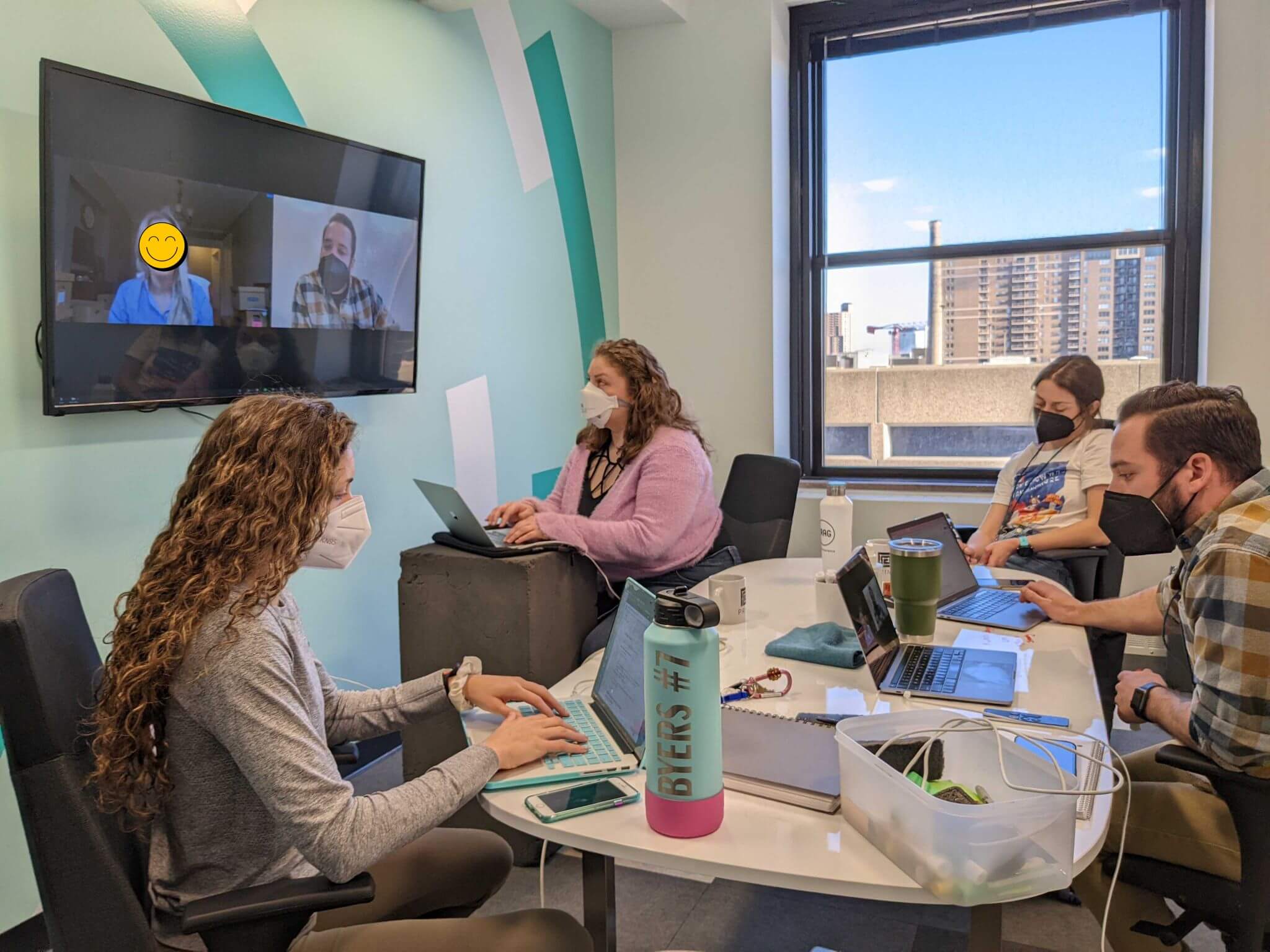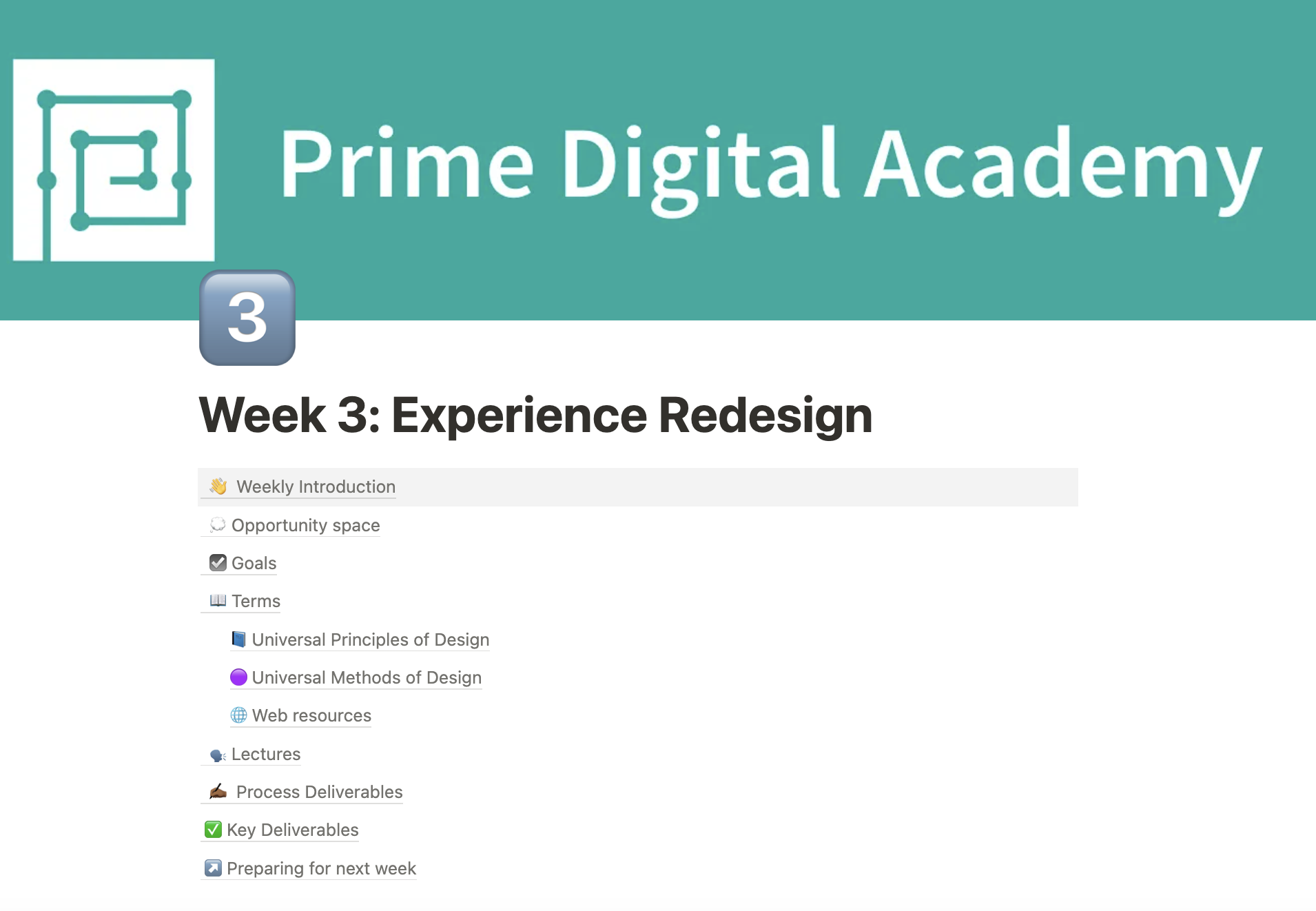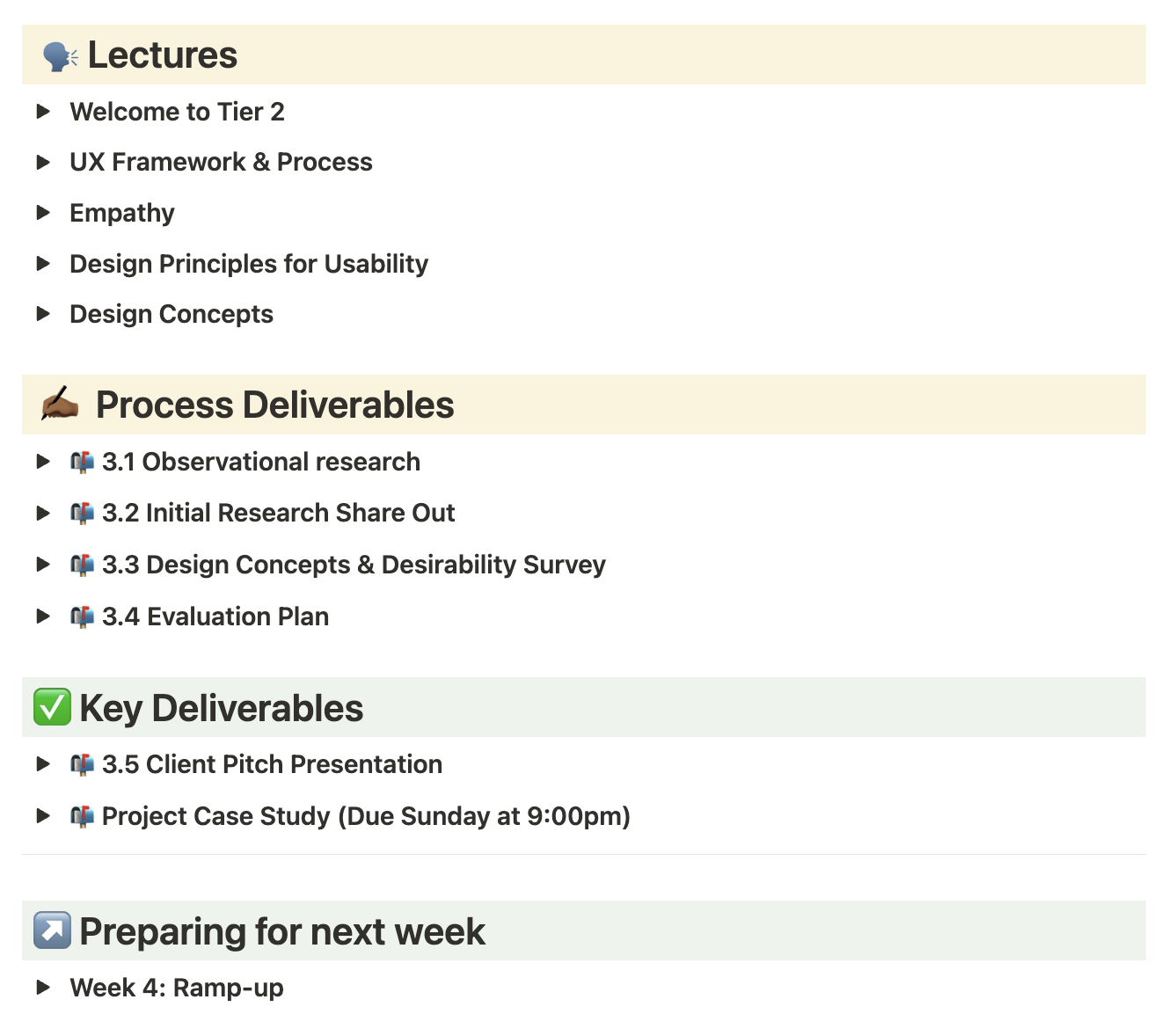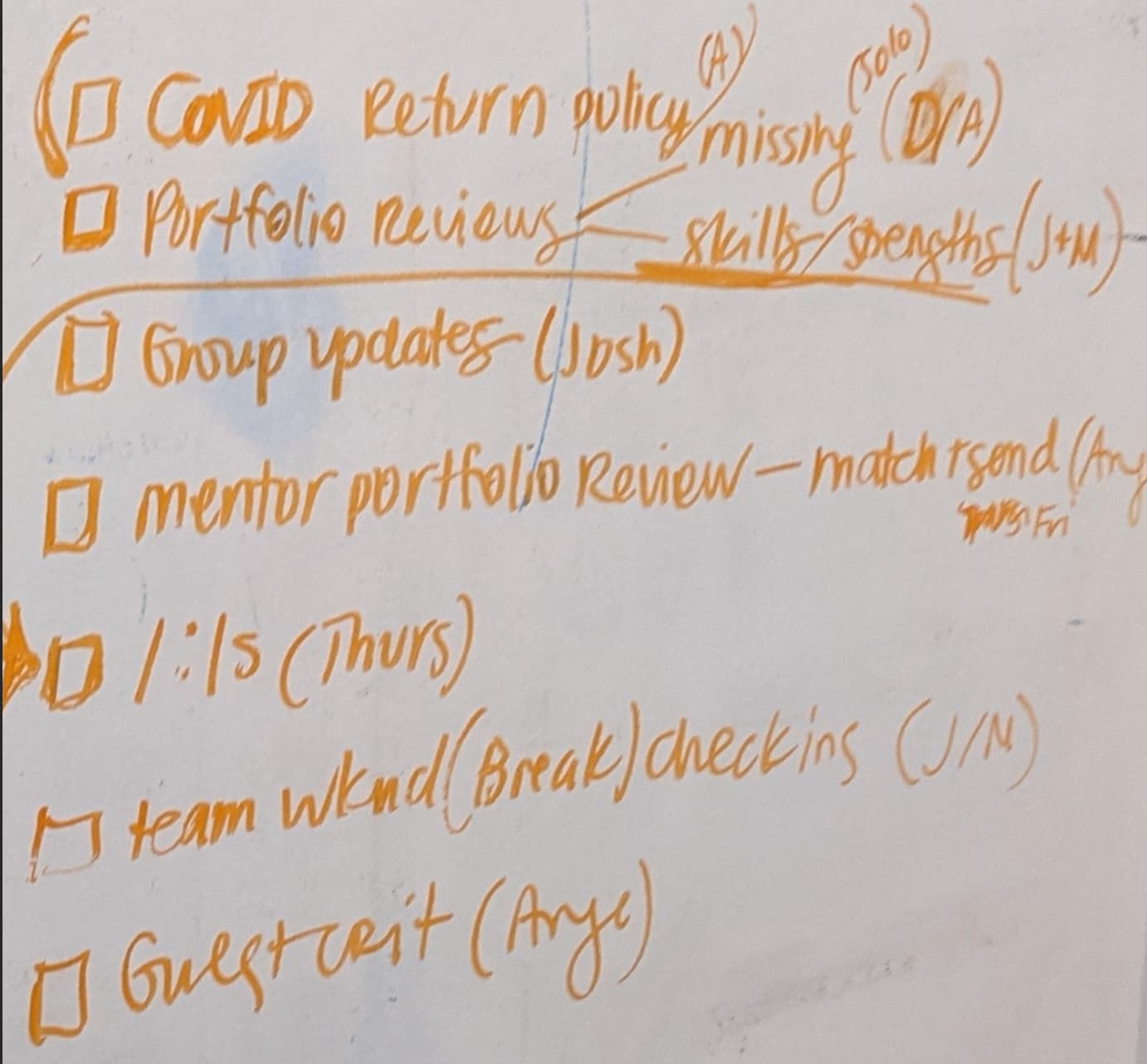After years of working on emergency response projects in the pandemic, I shifted gears and joined Prime Digital Academy to help grow the next generation of technologists. I worked closely with cohorts of early-career professionals in User Experience and Technology, using hands-on, participatory learning methods.
Supporting the Next Generation of Technologists #
I've written a little about my work Facilitating Group Learning and I still think it's really neat! A teacher directly lecturing to a classroom, isn't the best way to learn. Individuals need to be full-participants. This is true for learners and this is true for people working in organizations. Better outcomes happen when the leader de-centers themselves as the expert and shifts power to the people who are doing the work.
How did we do that at Prime? Well, over an 18-week program, we moved through three tiers:
- Tier 1: Foundations in common UX tools and methods
- Tier 2: Six design sprints with real projects from local nonprofits and startups
- Tier 3: Advanced practice through self-scoped and client-facing projects
Each week followed a rhythm modeled after a modified Google Ventures Design Sprint:
- Monday: Introduce the client project and teach a new method (like content strategy or usability testing)
- Tuesday: Learners apply the new method on our client project
- Wednesday: Prototyping and peer critique
- Thursday: Usability testing with real users
- Friday: Final presentations to the client
My role was to facilitate rather than lecture. Staying close to the work, stepping in when learners got stuck or asked for help. This model encouraged rapid, supported experimentation and helped learners apply new skills immediately to real-world problems.
Learners having a stakeholder meeting #

Learners facilitating a design critique #

Improving the content strategy for Prime's curriculum #
WWhile teaching at Prime, I saw a clear opportunity to improve how we delivered and managed curriculum content. Tools like Figma and Notion had matured during the pandemic, creating new possibilities for how teams could work and learn remotely. Yet much of our curriculum still lived in static PDFs, shared in Slack threads—easy to miss and hard to reference.
To solve this, I led the development of a living curriculum playbook in Notion. This helped reduce repetitive questions from learners—things like:
- “What does heuristics mean?”
- “Do you have a usability testing guide?”
- “Where are the client materials again?”
The Notion-based curriculum gave learners one central, searchable place to find what they needed, so they could spend less time lost and more time learning. Each of the 18 weeks had a dedicated page organized around:
- Goals: What core skills learners would focus on
- Terms: Definitions of key UX concepts
- Lectures: Links to slides and recordings for review
- Deliverables: What was the client expecting us to deliver that week
The modular content strategy also made it easy to remix the content for other programs, like UX Academy – a shorter, accelerated version of the course for recent college grads. This content strategy work helped make the program more scalable and allowed instructors to spend their time guiding deep questions instead of repeating logistical answers.
There is a lot more content strategy process work that I am being respectful not to show, but here were some of the outcomes:
A snapshot of a week's content hierarchy #

A snapshot of a weeks deliverables #

Trauma-Informed Education Design in a Pandemic #
A hard reality was that we were also Public Health Professionals, in addition to our responsibilities as educators. This work took place during the height of the COVID-19 pandemic, when learners were navigating overlapping personal, economic, and societal upheavals. Many students came from non-traditional backgrounds and were making career changes after jobs lost in the lockdowns. Others were processing the trauma of the uprisings in Minneapolis, just blocks from where we gathered.
We approached teaching with empathy and flexibility, grounded in trauma-informed practices. This meant balancing the need for structure with room for care—designing curriculum that was rigorous but adaptable, and creating space for students to bring their whole selves into the learning environment.
There were challenges, of course. But I’m proud of how we supported people through an uncertain time—and helped them step into new roles with confidence and skill.
A whiteboard sketching a curriculum. At the top: COVID Return Policy
